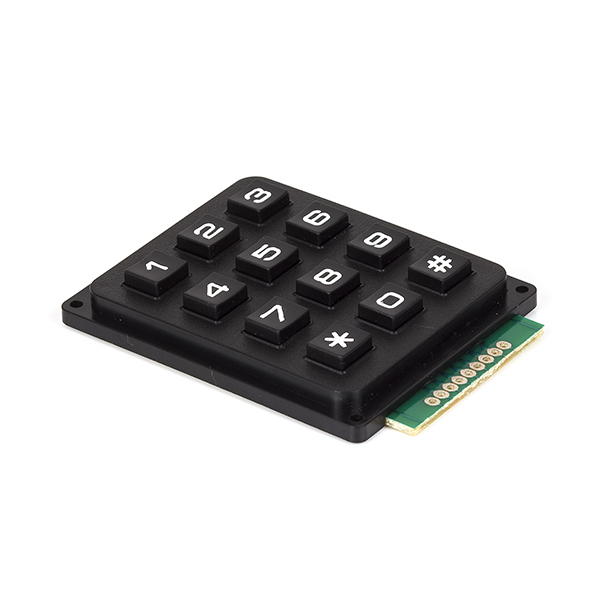Program Flow of ATmega16 microcontroller
/* Name : Main.c
* Purpose : Source code for keypad Interfacing with ATMEGA16.
* Author : GEMICATES
* Date : 04-07-2017
* Website : www.gemicates.org
* Revision : None
*/
#include<avr/io.h> // Header File for ATMEGA16
#include<util/delay.h> // Include Delay Function
#define KEY PORTB // To Set Port B as Keypad
#define r1 PB0 // To Set Pin B0-B3 as Keypad Row
#define r2 PB1
#define r3 PB2
#define r4 PB3
#define c1 PB4 // To Set Pin B4-B6 as Keypad Column
#define c2 PB5
#define c3 PB6
/* Function to Check Four Rows and Columns*/
void check1(void);
void check2(void);
void check3(void);
void check4(void);
#define LCD_DATA PORTD // To Set Port D as LCD data Pins
#define CON PORTA // To Set Port A Pins A0-A2 as LCD Control Pins
#define en PA2 // Enable signal
#define rw PA1 // Read/Write signal
#define rs PA0 // Resister Select signal
/* Function For LCD display*/
void LCD_cmd(unsigned char cmd);
void init_LCD(void);
void LCD_write(unsigned char data);
void string(unsigned char *str);
/* Main Function*/
void main()
{
unsigned char value;
DDRD=0xff; // LCD_DATA port as output port
DDRA=0x07; // Set the Data Direction Register (A2-A0) as Ouput
DDRB=0x0F; // Set the Data Direction Register (B3-B0) as Ouput
KEY=0xf0; // Make Input Pins are High
init_LCD(); // initialization of LCD
LCD_cmd(0x86); // bring cursor to position 6 of ROW 1
LCD_write('H');
LCD_cmd(0x87); // bring cursor to position 7 of ROW 1
LCD_write('I');
LCD_write('!');
_delay_ms(50);
LCD_cmd(0xC3); // bring cursor to position 3 of ROW 2
string("**GUYS**");
_delay_ms(50);
LCD_cmd(0x01); // clear screen
LCD_cmd(0x83); // bring cursor to position 3 of ROW 1
string("WELCOME TO");
_delay_ms(100);
LCD_cmd(0xC3); // bring cursor to position 3 of ROW 2
string("GEMICATES");
_delay_ms(100);
LCD_cmd(0x01); // clear screen
LCD_cmd(0x0C); // Display On cursor Off
string("press a key");
LCD_cmd(0xc0);
while(1)
{
PORTB=0xF0; // Set all the input to one
value=PINB; // Get the PORTD value in variable "value"
if(value!=0xf0) // If any key is pressed value changed
{
check1();
check2();
check3();
check4();
}
}
return 0;
}
void check1(void) // To check Row1
{
KEY =0b11111110;
_delay_ms(20);
if(bit_is_clear(PINB,c1))
{
output(1);
_delay_ms(20);
}
else if(bit_is_clear(PINB,c2))
{
output(2);
_delay_ms(20);
}
else if(bit_is_clear(PINB,c3))
{
output(3);
_delay_ms(20);
}
}
void check2(void) // TO check Row2
{
KEY=0b11111101;
_delay_ms(20);
if(bit_is_clear(PINB,c1))
{
output(4);
_delay_ms(20);
}
else if(bit_is_clear(PINB,c2))
{
output(5);
_delay_ms(20);
}
else if(bit_is_clear(PINB,c3))
{
output(6);
_delay_ms(20);
}
}
void check3(void) // To check Row3
{
KEY=0b11111011;
_delay_ms(20);
if(bit_is_clear(PINB,c1))
{
output(7);
_delay_ms(20);
}
else if(bit_is_clear(PINB,c2))
{
output(8);
_delay_ms(20);
}
else if(bit_is_clear(PINB,c3))
{
output(9);
_delay_ms(20);
}
}
void check4(void) // To check Row4
{
KEY =0b11110111;
_delay_ms(20);
if(bit_is_clear(PINB,c1))
{
output(10);
_delay_ms(20);
}
else if(bit_is_clear(PINB,c2))
{
output(11);
_delay_ms(20);
}
else if(bit_is_clear(PINB,c3))
{
output(12);
_delay_ms(20);
}
}
void init_LCD(void)
{
LCD_cmd(0x38); // initializtion of 16X2 LCD in 8bit mode
_delay_ms(1);
LCD_cmd(0x01); // clear LCD
_delay_ms(1);
LCD_cmd(0x0E); // cursor ON
_delay_ms(1);
LCD_cmd(0x80); // ---8 go to first line and --0 is for 0th position
_delay_ms(1);
return;
}
void LCD_cmd(unsigned char cmd)
{
LCD_DATA=cmd;
CON =(0<<rs)|(0<<rw)|(1<<en); // making RS and RW as LOW and EN as HIGH
_delay_ms(1);
CON =(0<<rs)|(0<<rw)|(0<<en); // making RS, RW , LOW and EN as LOW
_delay_ms(50);
return;
}
void LCD_write(unsigned char data)
{
LCD_DATA= data;
CON = (1<<rs)|(0<<rw)|(1<<en); // making RW as LOW and RS, EN as HIGH
_delay_ms(1);
CON = (1<<rs)|(0<<rw)|(0<<en); // making EN and RW as LOW and RS HIGH
_delay_ms(50); // give a 10 milli second delay to get thigs executed
return ;
}
void string(unsigned char *str) // take address vaue of the string in pionter *str
{
int i=0;
while(str[i]!='\0') // loop will go on till the NULL charaters is soon in string
{
LCD_write(str[i]); // sending data on CD byte by byte
i++;
}
return;
}
void output(int rev)
{
LCD_cmd(0x01); // clear screen
LCD_cmd(0x86); // bring cursor to position 3 of ROW 1
switch(rev)
{
case 1:
string("ONE");
_delay_ms(1000);
break;
case 2:
string("TWO");
_delay_ms(1000);
break;
case 3:
string("THREE");
_delay_ms(1000);
break;
case 4:
string("FOUR");
_delay_ms(1000);
break;
case 5:
string("FIVE");
_delay_ms(1000);
break;
case 6:
string("SIX");
_delay_ms(1000);
break;
case 7:
string("SEVEN");
_delay_ms(1000);
break;
case 8:
string("EIGHT");
_delay_ms(1000);
break;
case 9:
string("NINE");
_delay_ms(1000);
break;
case 10:
string("TEN");
_delay_ms(1000);
break;
case 11:
string("ELEVEN");
_delay_ms(1000);
break;
case 12:
string("TWELVE");
_delay_ms(1000);
break;
}
}
